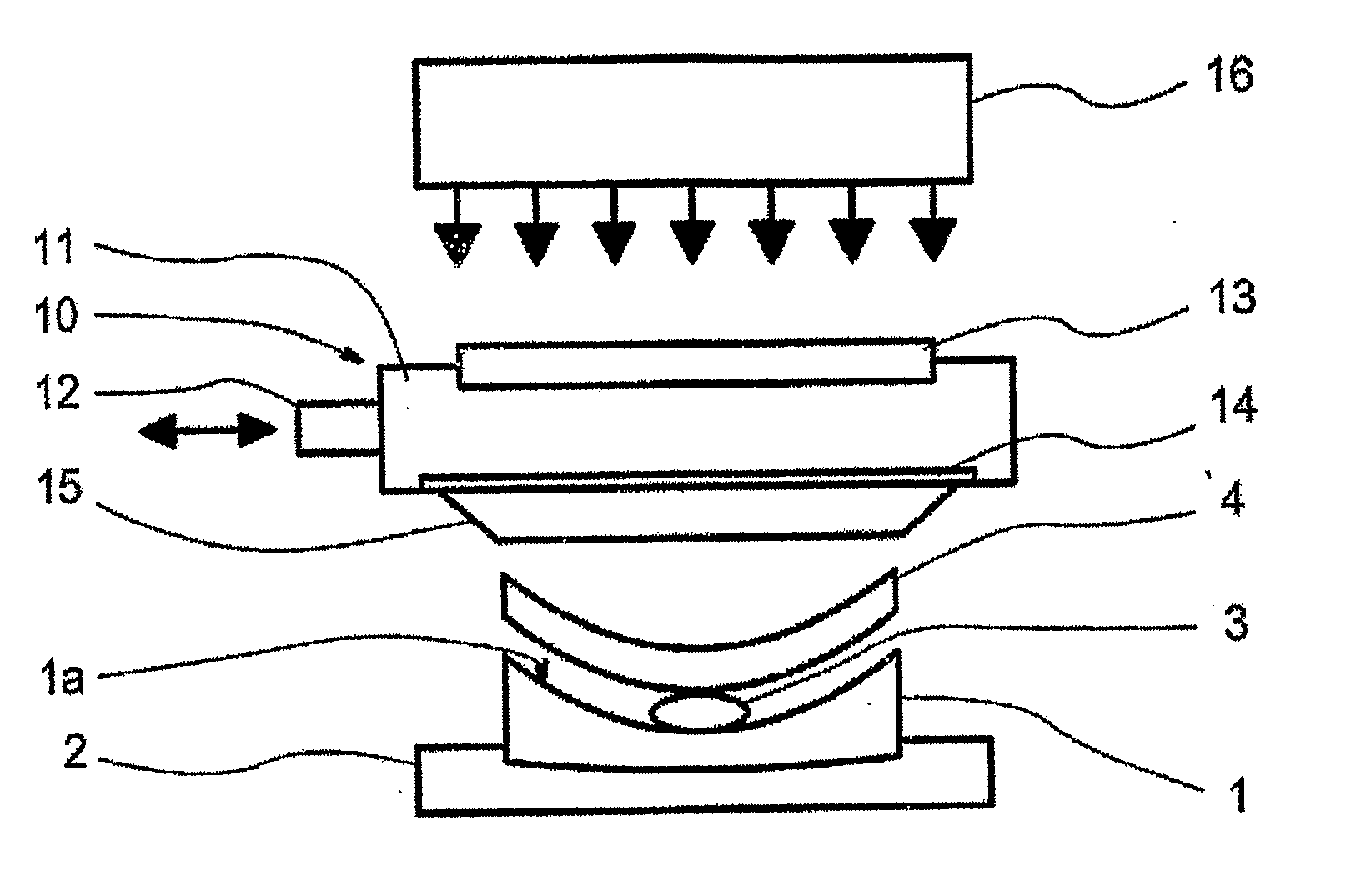Process for Making a Coated Optical Lens Free of Visible Fining Lines
a coating and optical lens technology, applied in the field of coating optical lenses, can solve the problems of significant surface roughness, still visible transparent lens blanks, etc., and achieve the effect of good optical quality
- Summary
- Abstract
- Description
- Claims
- Application Information
AI Technical Summary
Benefits of technology
Problems solved by technology
Method used
Image
Examples
example 1
[0136] A semi-finished lens SF lens made of diethyleneglycol bis-allyl carbonate copolymer (CR-39®) was generated by V-95 and fined with 15 μm pad to a −1.25 power lens (back curvature 5.0 base, diameter 70 mm) without polishing. Fining process is done with LOH Toro-X—S / SL fining machine using a 15 μm pad made by 3M. The fining time is about 1 to 2 minutes. The lens was then washed with water and soap and coated with an abrasion-resistant coating by the process of the invention using a thin flexible wafer and the inflatable membrane apparatus as described in connection with the figures.
[0137] 5 drops of the liquid coating composition (0.12 g in total) are deposited on the fined main face of the lens. The thin flexible wafer is carefully placed on the liquid coating composition drops.
[0138] The resulting assembly is then placed in front of the inflatable membrane of the air accumulator and air is introduced up to a pressure of 84 kPa (12 Psi) so that the liquid coating composition ...
example 2
[0143] Example 1 is reproduced except using a liquid coating composition of refractive index nD25=1.532
[0144] This liquid composition has the following formulation, in weight %
EPON 228 (bisphenol A epoxy resin)60GE 21 (1,4-butanediol diglycidyl ether)40IRGACURE 552 (photoinitiator) 4 phrITX (sensitizer)0.2 phr
example 3
[0147] A PC SF lens was generated by V-95 and fined with 15 μm pad to −2.00 power lens (back curve=5.0 base) without polishing. The lens was then washed with soap and water and the same coating solution as in comparative example 2 is applied as in Example 1.
PUM
| Property | Measurement | Unit |
|---|---|---|
| thickness | aaaaa | aaaaa |
| pressure | aaaaa | aaaaa |
| pressure | aaaaa | aaaaa |
Abstract
Description
Claims
Application Information
 Login to View More
Login to View More - R&D
- Intellectual Property
- Life Sciences
- Materials
- Tech Scout
- Unparalleled Data Quality
- Higher Quality Content
- 60% Fewer Hallucinations
Browse by: Latest US Patents, China's latest patents, Technical Efficacy Thesaurus, Application Domain, Technology Topic, Popular Technical Reports.
© 2025 PatSnap. All rights reserved.Legal|Privacy policy|Modern Slavery Act Transparency Statement|Sitemap|About US| Contact US: help@patsnap.com



